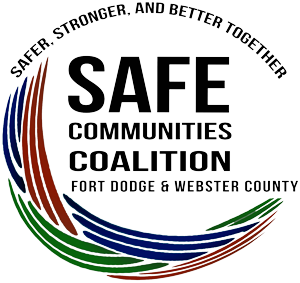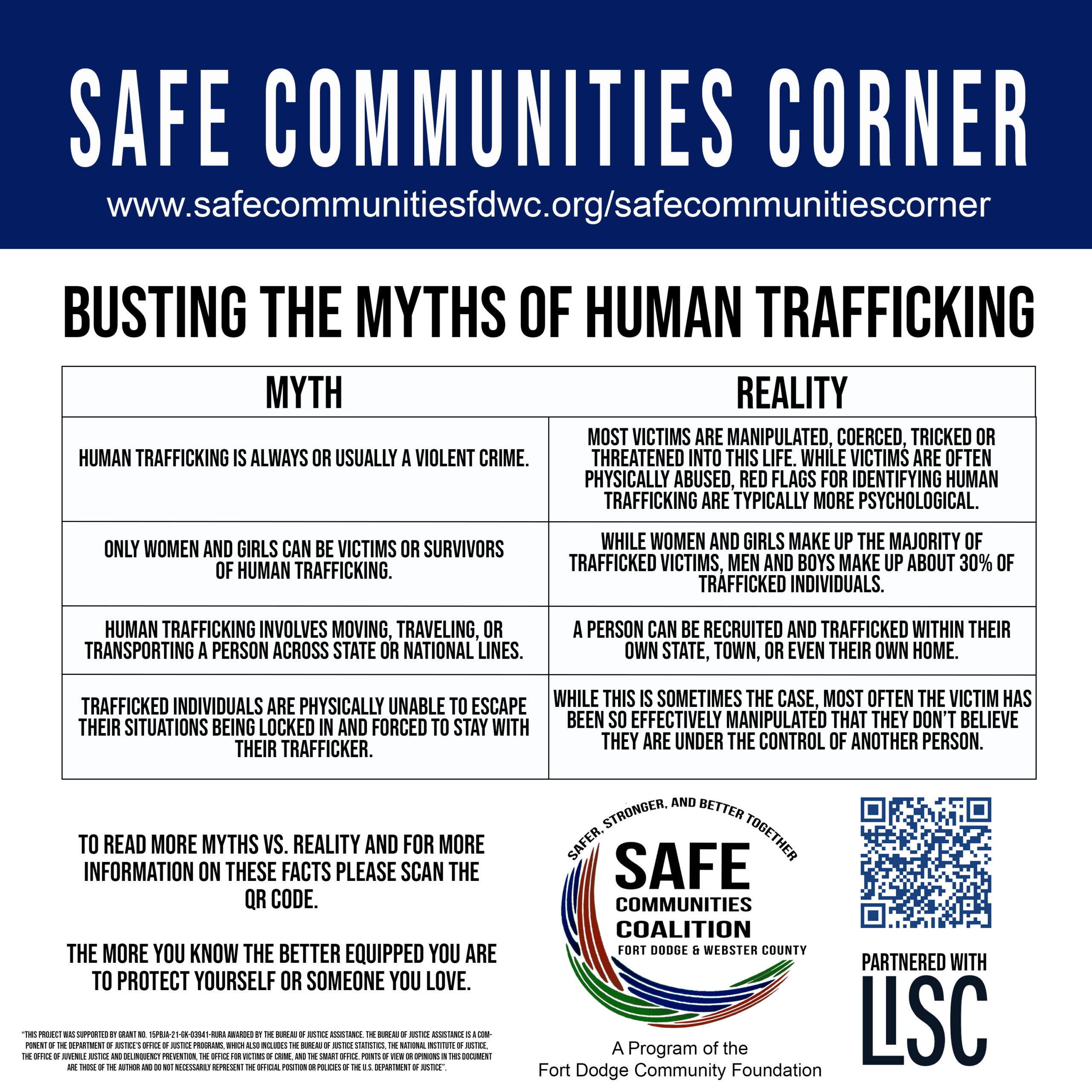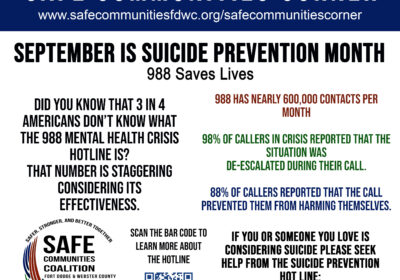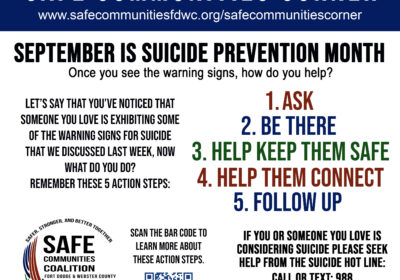If I say the words ‘human trafficking’ to you, what comes to mind? A white van? A third-world country? A semi full of women and children being held against their will? If you saw last week’s blog, you know that this type of trafficking only accounts for less than 3% of the victims. The other 97% are trafficked by someone they know and often love. So what does that look like in a community?
This week we’re going to talk about some of the myths vs realities of human trafficking and what we, as a community, can be aware of to help potential victims or prevent ourselves or someone we love from becoming a victim.
Myth: Human trafficking is always or usually a violent crime.
Fact: While human trafficking is a horrific crime, violating the most intimate part of a person, the initial act of ‘getting’ a victim is not typically a violent incident. It is usually a slow and devious process, taking the time to manipulate a victim’s mind and mold their perception of reality. Being able to control a person in this way reduces the chances of getting caught.
Myth: Only women and girls can be victims or survivors of human trafficking.
Fact: Women and girls do make up the majority of victims, however, men and boys make up about 30% of trafficked individuals. On the flip side of that, men make up the vast majority of traffickers, but women are not completely exempt. Often victims become the traffickers.
Myth: Human trafficking involves moving, traveling, or transporting a person across state or national lines.
Fact: Most trafficking is done by a relative or significant other. Victims are trafficked within their own hometown, and sometimes out of their own homes. Most trafficking is done without physically transporting the victims at all.
Myth: Trafficked individuals are physically unable to escape their situations being locked in and forced to stay with their trafficker.
Fact: Control is key for traffickers. Victims are often so effectively manipulated that they don’t even realize that what they are doing for their trafficker is not normal. Even if they do decide that they want help, their trafficker has removed any source of aid that they might need. Victims of trafficking usually have no ID, no money, no transportation, and no access to friends or someone that might help them.
I have one more myth that might surprise you to learn is not true. Myth: All victims in active trafficking want help getting out.
Truth: Escaping this life often comes in steps for a variety of reasons. Guilt, fear, isolation, and loyalty to master manipulators often keep a victim from identifying themselves as a victim. They often need a lot of reassurance and a lot of various resources to feel comfortable stepping out of this world.
If you suspect someone you know is being trafficked, be patient and encouraging. Please visit the Iowa Office to Combat Human Trafficking for more information.



